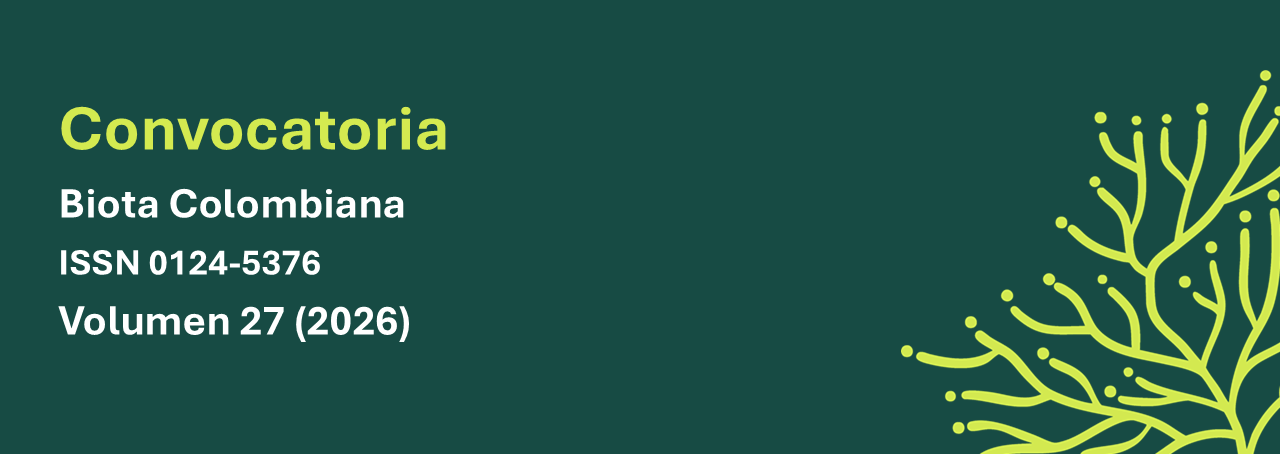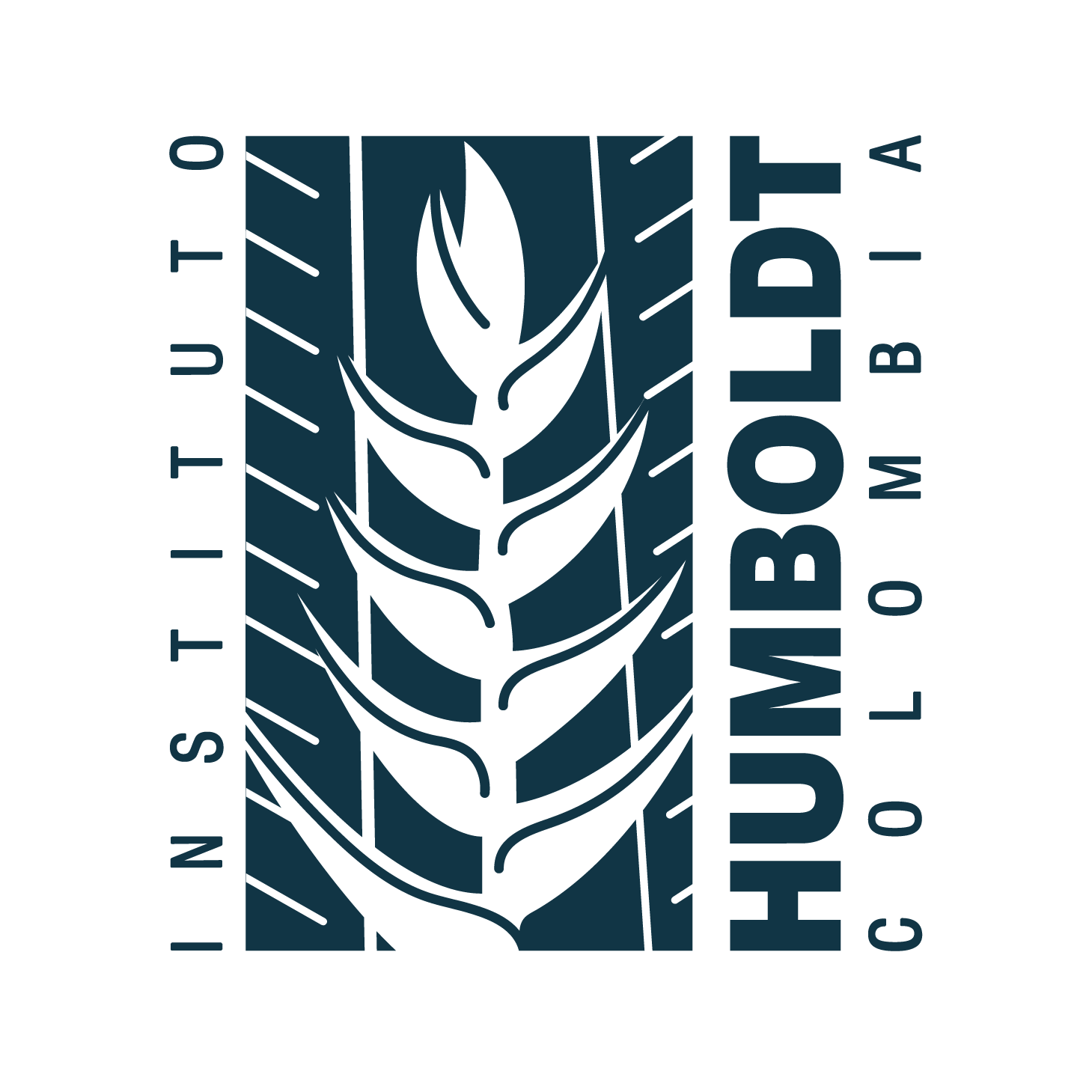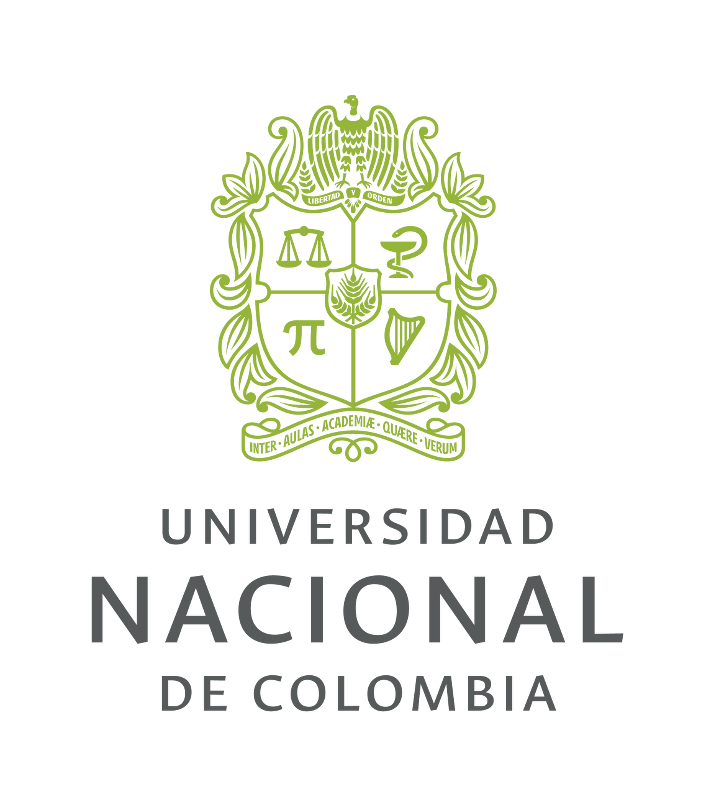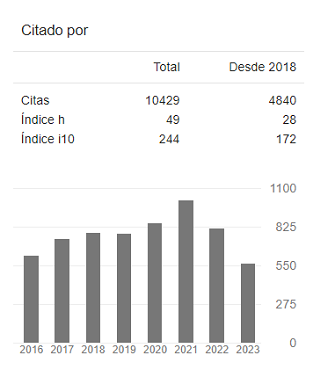Resumen (es):
Las Áreas Naturales Protegidas (ANPs) constituyen la principal estrategia para la conservación de la biodiversidad en Colombia y en el mundo. Una de las formas de evaluar la efectividad y el impacto de las ANPs es a través de las especies que protegen, especialmente de aquellas especies cuyas poblaciones están en declive (amenazadas). El objetivo de este trabajo fue evaluar la riqueza de especies de vertebrados amenazados y endémicos amenazados dentro de las ANPs de la región Pacífico de Colombia, así como describir las zonas de mayor riqueza de especies en la región. Usando información disponibilizada por la UICN y Birdlife-International, se diseñaron mapas de riqueza de especies a nivel general y a nivel de grupo biótico. Encontramos que más del 80 % de las especies de vertebrados amenazados y endémicos amenazados se distribuyen dentro de las ANPs de la región Pacífico de Colombia. Se sugiere que las ANPs del Pacífico colombiano cumplen un rol fundamental para la conservación de especies amenazadas de la región. Se presentan implicaciones de los resultados obtenidos en términos de los acuerdos internacionales a los cuales Colombia está subscrita, así como algunas recomendaciones para futuros estudios relacionados.
Resumen (en):
Natural Protected Areas (NPAs) are the main strategy for biodiversity conservation in Colombia and the world. One way to evaluate the effectiveness and impact of NPAs is through the species they protect, especially those species which populations are in decline (threatened). The objective of this work was to evaluate the species richness of threatened and endemic endangered vertebrates within the NPAs of the Pacific region of Colombia, as well as to describe the areas of greatest species richness in the region. Using information available from the IUCN and Birdlife-International, species richness maps were designed at the general and biotic group levels. We found that more than 80% of the threatened and endemic vertebrate species are distributed inside the NPAs of the Pacific region of Colombia. We suggest that the NPAs of the Colombian Pacific play a fundamental role in the conservation of threatened species in the region. Implications of the results obtained in terms of the international agreements to which Colombia subscribes are presented, as well as some recommendations for future related studies.
Palabras clave:
Biogeographic Chocó, Convention on Biological Diversity, Species distribution, Endemic species, Species richness, SINAP (en)
Referencias
Armenteras, D., Gast, F., & Villareal, H. (2003). Andean forest fragmentation and the representativeness of protected natural areas in the eastern Andes, Colombia. Biological Conservation, 113(2), 245–256. https://doi.org/10.1016/S0006-3207(02)00359-2
Baillie, J., Hilton-Taylor, C., & Stuart, S. N. (Eds.). (2004). 2004 IUCN red list of threatened species: A global species assessment. IUCN--The World Conservation Union.
Barlow, J., Lennox, G. D., Ferreira, J., Berenguer, E., Lees, A. C., Nally, R. M., Thomson, J. R., Ferraz, S. F. de B., Louzada, J., Oliveira, V. H. F., Parry, L., Ribeiro de Castro Solar, R., Vieira, I. C. G., Aragão, L. E. O. C., Begotti, R. A., Braga, R. F., Cardoso, T. M., de Oliveira, R. C., Souza Jr, C. M., … Gardner, T. A. (2016). Anthropogenic disturbance in tropical forests can double biodiversity loss from deforestation. Nature, 535(7610), 144–147. https://doi.org/10.1038/nature18326
Berti, E., Monsarrat, S., Munk, M., Jarvie, S., & Svenning, J.-C. (2020). Body size is a good proxy for vertebrate charisma. Biological Conservation, 251, 108790. https://doi.org/10.1016/j.biocon.2020.108790
BirdLife International, & Handbook of the Birds of the World. (2022). Bird species distribution maps of the world (2022.1). http://datazone.birdlife.org/species/requestdis
Butchart, S. H. M., Akcakaya, H. R., Kennedy, E., & Hilton-Taylor, C. (2006). Biodiversity Indicators Based on Trends in Conservation Status: Strengths of the IUCN Red List Index. Conservation Biology, 20(2), 579–581. https://doi.org/10.1111/j.1523-1739.2006.00410.x
Calderón, J., & Benavies, A. M. (2021). Deforestación y fragmentación en las áreas más biodiversas de la Cordillera Occidental de Antioquia (Colombia). Biota Colombiana, 23(1), e942. https://doi.org/10.21068/2539200X.942
Castaño, J. H., & Corrales, J. D. (2010). Mamíferos de la cuenca del río La Miel (Caldas): Diversidad y uso cultural. Boletín Científico Centro de Museos Museo de Historia Natural, 14, 56–75.
CONPES. (2021). Política para la consoliación del Sistema Nacional de Áreas Protegidas -SINAP- (Núm. 4050; p. 113). Departamento Nacional de Planeación.
Cortes, A. M., Ruiz-Agudelo, C. A., Valencia-Aguilar, A., & Ladle, R. J. (2014). Ecological functions of neotropical amphibians and reptiles: A review. Universitas Scientiarum, 20(2), 229. https://doi.org/10.11144/Javeriana.SC20-2.efna
Díaz, J. M., & Galeano, J. (2016). El entorno biogeofísico. En J. M. Díaz, L. Guillot, & M. C. Velandia (Eds.), La pesca artesanal en la costa norte del Pacífico colombiano: Un horizonte ambivalente (pp. 13–27). Fundación MarViva.
Fielding, A. H., & Bell, J. F. (1997). A review of methods for the assessment of prediction errors in conservation presence/absence models. Environmental Conservation, 24(1), 38–49. https://doi.org/10.1017/S0376892997000088
Froese, R., & Pauly, D. (2022). Fishbase. World Wide Web electronic publication (Versión 06/2022). www.fishbase.org
Frost, D. R. (2021). Amphibian Species of the World: An Online Reference [Data set]. American Museum of Natural History. https://amphibiansoftheworld.amnh.org/index.php
Hannah, L. (2008). Protected Areas and Climate Change. Annals of the New York Academy of Sciences, 1134(1), 201–212. https://doi.org/10.1196/annals.1439.009
Hanski, I. K. (1998). Home ranges and habitat use in the declining flying squirrel Pteromys volans in managed forests. Wildlife Biology, 4(1), 33–46. https://doi.org/10.2981/wlb.1998.013
Hernández-Camacho, J. (1992). Caracterización geográfica de Colombia. En G. Halffter (Ed.), La diversidad biológica de Iberoamérica I. Acta Zoológica Mexicana, Vol. Especial.
Hernández-Camacho, J., Hurtado Guerra, A., Ortiz Quijano, R., & Walschburger, T. (1992). Unidades biogeográficas de Colombia. En G. Halffter (Ed.), La diversidad biológica de Iberoamérica I. Acta Zoológica Mexicana, Vol. Especial.
Hickman, C. P. (2017). Integrated principles of zoology (Seventeenth edition). McGraw-Hill Education.
IUCN. (2022a). Spatial Data Download. https://www.iucnredlist.org/resources/spatial-data-download
IUCN. (2022b). Summary Statistics. https://www.iucnredlist.org/resources/summary-statistics
Kearney, S. G., Carwardine, J., Reside, A. E., Adams, V. M., Nelson, R., Coggan, A., Spindler, R., & Watson, J. E. M. (2022). Saving species beyond the protected area fence: Threats must be managed across multiple land tenure types to secure Australia’s endangered species. Conservation Science and Practice, 4(3). https://doi.org/10.1111/csp2.617
Liu, G., Rowley, J. J. L., Kingsford, R. T., & Callaghan, C. T. (2021). Species’ traits drive amphibian tolerance to anthropogenic habitat modification. Global Change Biology, 27(13), Art. 13. https://doi.org/10.1111/gcb.15623
López-Angarita, J., Tilley, A., Díaz, J. M., Hawkins, J. P., Cagua, E. F., & Roberts, C. M. (2018). Winners and Losers in Area-Based Management of a Small-Scale Fishery in the Colombian Pacific. Frontiers in Marine Science, 5, 23. https://doi.org/10.3389/fmars.2018.00023
Lynch, J. D. (1999). Ranas pequeñas, la geometría de evolución y la especiación en los Andes colombianos. Revista de la Academia Colombiana de Ciencias Exactas, Físicas y Naturales, 23(86).
Mammal Diversity Database. (2022). Mammal Diversity Database (1.9) [Data set]. Zenodo. https://doi.org/10.5281/ZENODO.4139722
McGinlay, J., Parsons, D. J., Morris, J., Hubatova, M., Graves, A., Bradbury, R. B., & Bullock, J. M. (2017). Do charismatic species groups generate more cultural ecosystem service benefits? Ecosystem Services, 27, 15–24. https://doi.org/10.1016/j.ecoser.2017.07.007
Mills, C. H., Gordon, C. E., & Letnic, M. (2018). Rewilded mammal assemblages reveal the missing ecological functions of granivores. Functional Ecology, 32(2), 475–485. https://doi.org/10.1111/1365-2435.12950
Moreno, L. A., Andrade, G. I., Didier, G., & Hernández-Manrique, O. L. (2020). Biodiversidad 2020. Estado y tendencias de la biodiversidad continental de Colombia. Instituto de Investigación de Recursos Biológicos Alexander von Humboldt.
Morrone, J. J. (2014). Biogeographical regionalisation of the Neotropical region. Zootaxa, 3782(1), 1–110. https://doi.org/10.11646/zootaxa.3782.1.1
Olson, D. M., Dinerstein, E., Wikramanayake, E. D., Burgess, N. D., Powell, G. V. N., Underwood, E. C., D’amico, J. A., Itoua, I., Strand, H. E., Morrison, J. C., Loucks, C. J., Allnutt, T. F., Ricketts, T. H., Kura, Y., Lamoreux, J. F., Wettengel, W. W., Hedao, P., & Kassem, K. R. (2001). Terrestrial Ecoregions of the World: A New Map of Life on Earth. BioScience, 51(11), 933-938. https://doi.org/10.1641/0006-3568(2001)051[0933:TEOTWA]2.0.CO;2
Parques Nacionales Naturales de Colombia. (2022a). Datos abiertos. https://www.parquesnacionales.gov.co/portal/es/servicio-al-ciudadano/datos-abiertos/
Parques Nacionales Naturales de Colombia. (2022b). Parques Nacionales. https://www.parquesnacionales.gov.co/portal/es/parques-nacionales-naturales/
Parques Nacionales Naturales de Colombia. (2022c). Sistema Nacional de Áreas Protegidas – SINAP. https://www.parquesnacionales.gov.co/portal/es/sistema-nacional-de-areas-protegidas-sinap/
Pérez-Escobar, O. A., Lucas, E., Jaramillo, C., Monro, A., Morris, S. K., Bogarín, D., Greer, D., Dodsworth, S., Aguilar-Cano, J., Sanchez Meseguer, A., & Antonelli, A. (2019). The Origin and Diversification of the Hyperdiverse Flora in the Chocó Biogeographic Region. Frontiers in Plant Science, 10, 1328. https://doi.org/10.3389/fpls.2019.01328
Pigot, A. L., Sheard, C., Miller, E. T., Bregman, T. P., Freeman, B. G., Roll, U., Seddon, N., Trisos, C. H., Weeks, B. C., & Tobias, J. A. (2020). Macroevolutionary convergence connects morphological form to ecological function in birds. Nature Ecology & Evolution, 4(2), 230–239. https://doi.org/10.1038/s41559-019-1070-4
QGIS.org. (2022). QGIS Geographic Information System (3.26.1-Buenos Aires) [Debian GNU/Linux 11].
Ramírez-Chaves, H. E., Castro, A. F. S., Morales-Martínez, D. M., Rodríguez-Posada, M. E., Zurc, D., Osbahr, D. C. C., Trujillo, A., Elkin Alexi Noguera Urbano, Peña, G. E. P., Maya, J. F. G., Torres, J. P., Meluk, H. M., Castañeda, C. L., Valencia, A. V., & Charry, D. Z. (2021). Mamíferos de Colombia (1.12, p. 543 records) [Data as a Darwin Core Archive file,Metadata as an EML file,Metadata as an RTF file]. Sociedad Colombiana de Mastozoología. https://doi.org/10.15472/KL1WHS
Riemann, H., & Ezcurra, E. (2005). Plant endemism and natural protected areas in the peninsula of Baja California, Mexico. Biological Conservation, 122(1), 141–150. https://doi.org/10.1016/j.biocon.2004.07.008
Roberts, K. E., Smith, B. J., Burkholder, D., & Hart, K. M. (2021). Evaluating the use of marine protected areas by endangered species: A habitat selection approach. Ecological Solutions and Evidence, 2(1). https://doi.org/10.1002/2688-8319.12035
Rodrigues, A., Pilgrim, J., Lamoreux, J., Hoffmann, M., & Brooks, T. (2006). The value of the IUCN Red List for conservation. Trends in Ecology & Evolution, 21(2), 71–76. https://doi.org/10.1016/j.tree.2005.10.010
Rondinini, C., Wilson, K. A., Boitani, L., Grantham, H., & Possingham, H. P. (2006). Tradeoffs of different types of species occurrence data for use in systematic conservation planning: Species data for conservation planning. Ecology Letters, 9(10), 1136–1145. https://doi.org/10.1111/j.1461-0248.2006.00970.x
Santini, L., Saura, S., & Rondinini, C. (2016). Connectivity of the global network of protected areas. Diversity and Distributions, 22(2), 199–211. https://doi.org/10.1111/ddi.12390
Sarkar, S., Pressey, R. L., Faith, D. P., Margules, C. R., Fuller, T., Stoms, D. M., Moffett, A., Wilson, K. A., Williams, K. J., Williams, P. H., & Andelman, S. (2006). Biodiversity Conservation Planning Tools: Present Status and Challenges for the Future. Annual Review of Environment and Resources, 31(1), 123-159. https://doi.org/10.1146/annurev.energy.31.042606.085844
SIB Colombia. (2022). Biodiversidad en cifras. https://cifras.biodiversidad.co/
Sullivan, B. L., Wood, C. L., Iliff, M. J., Bonney, R. E., Fink, D., & Kelling, S. (2009). eBird: A citizen-based bird observation network in the biological sciences. Biological Conservation, 142(10), 2282–2292. https://doi.org/10.1016/j.biocon.2009.05.006
Uetz, P., Freed, P., Aguilar, P., & Hošek, J. (2022). The reptile database. The reptile database. http://www.reptile-database.org/
Universidad Externado de Colombia. (2007). Ciudad, espacio y población: El proceso de urbanización en Colombia. Centro de Investigación sobre Dinámica Social.
Van Kerkhoff, L., Munera, C., Dudley, N., Guevara, O., Wyborn, C., Figueroa, C., Dunlop, M., Hoyos, M. A., Castiblanco, J., & Becerra, L. (2019). Towards future-oriented conservation: Managing protected areas in an era of climate change. Ambio, 48(7), 699–713. https://doi.org/10.1007/s13280-018-1121-0
Venter, O., Magrach, A., Outram, N., Klein, C. J., Possingham, H. P., Di Marco, M., & Watson, J. E. M. (2018). Bias in protected-area location and its effects on long-term aspirations of biodiversity conventions: Protected Areas Missing Biodiversity. Conservation Biology, 32(1), 127-134. https://doi.org/10.1111/cobi.12970
Vié, J.-C., Hilton-Taylor, C., Stuart, S. N., IUCN--The World Conservation Union, & IUCN Species Survival Commission (Eds.). (2009). Wildlife in a changing world: An analysis of the 2008 IUCN red list of threatened species. IUCN; Lynx Edicions.
Watson, J. E. M., Darling, E. S., Venter, O., Maron, M., Walston, J., Possingham, H. P., Dudley, N., Hockings, M., Barnes, M., & Brooks, T. M. (2016). Bolder science needed now for protected areas: Protected-Area Science Needs. Conservation Biology, 30(2), 243-248. https://doi.org/10.1111/cobi.12645
Watson, J. E. M., Dudley, N., Segan, D. B., & Hockings, M. (2014). The performance and potential of protected areas. Nature, 515(7525), 67-73. https://doi.org/10.1038/nature13947
Cómo citar

Esta obra está bajo una licencia internacional Creative Commons Atribución-NoComercial-SinDerivadas 4.0.
Derechos de autor 2023 Instituto de Investigación de Recursos Biológicos Alexander Von Humboldt


















